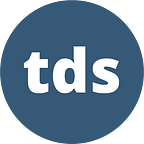In Data Science, the Best Way to Learn Is by Doing
Many of us are approaching that time of year when things are slowing down at work or at school ahead of the winter holidays. For some, this is the perfect occasion to keep schedules clear and plans minimal, and to focus on relaxing and catching up with family and friends. If that sounds like you: fantastic! Just keep this edition of the Variable bookmarked somewhere, and revisit it when the time is right.
For others, though, this quiet(er) stretch of the calendar presents a great opportunity to learn about and experiment with new topics. If you’re a data practitioner looking to do just that, we’re here to help.
This week, we’ve selected some of our best recent hands-on tutorials: they offer easy-to-follow explanations, provide plenty of code snippets for you to tinker with, and cover a broad range of exciting areas. Just choose one (or… six), roll up your sleeves, and get going.
- Expand your NLP toolkit. To gain valuable experience in extracting insights from textual data, follow along as Farzad Mahmoodinobar introduces us to the nitty-gritty details of sentiment analysis. His walkthrough presents a full implementation using NLTK, scikit-learn, and TextBlob.
- How to choose the right learning rate in PyTorch. In the mood for some practical skill-building in the field of deep learning? Leonie Monigatti’s new visual guide explains how to use learning-rate schedulers, which allow you to adjust—and optimize—the cadence between training epochs.
- A fresh way to leverage your device data and programming know-how. If you’re feeling uninspired by publicly available datasets, why not make the most of your own data? Rosie Young shows how to wrangle and explore your Strava data with Python, and how to draw interesting insights about your habits and activity levels along the way.
- The ultimate guide to probability distributions. If you have some free time—say, 97 minutes—between holiday events, we challenge you to find a more edifying way to spend it than with Reza Bagheri’s patient and comprehensive tutorial. Bringing together stats and programming, it covers the mathematical underpinnings of probability distributions and shows how to generate them in Python with the SciPy library.
- Brush up on your MySQL skills. If you anticipate working on some database-heavy projects in 2023, now is probably the best time to build up and expand your SQL knowledge. Lynn Kwong’s latest post tackles several advanced MySQL queries and multiple approaches to calculating median values.
- Getting images ready for their close-up. The real-world use cases for visual data have exploded in recent years, and each one calls for images that meet specific requirements. Conor O'Sullivan’s helpful tutorial is all about image augmentation for deep-learning projects: it begins with collecting a robust dataset, and goes on to cover techniques for manipulating images in Python.
- Your code can probably run a little faster. According to Casey Cheng, it’s impossible to point to the fastest looping method in Python: the approach that serves you best will likely vary from one situation to the other. It makes his detailed overview that much more useful, as it walks us through multiple options (with code examples included for each).
- Is it time to give your TensorFlow skills a boost? “The best way to learn is by doing,” says Rashida Nasrin Sucky — and we couldn’t agree more. If you have some ML experience and would like to learn how to customize your TensorFlow layers, loss functions, and activation functions, Rashida’s recent article is both clear and concise.
As the year draws to a close, we’re as grateful as ever for our readers’ support. If you’d like to make the biggest impact, consider becoming a Medium member.
Until the next Variable,
TDS Editors
